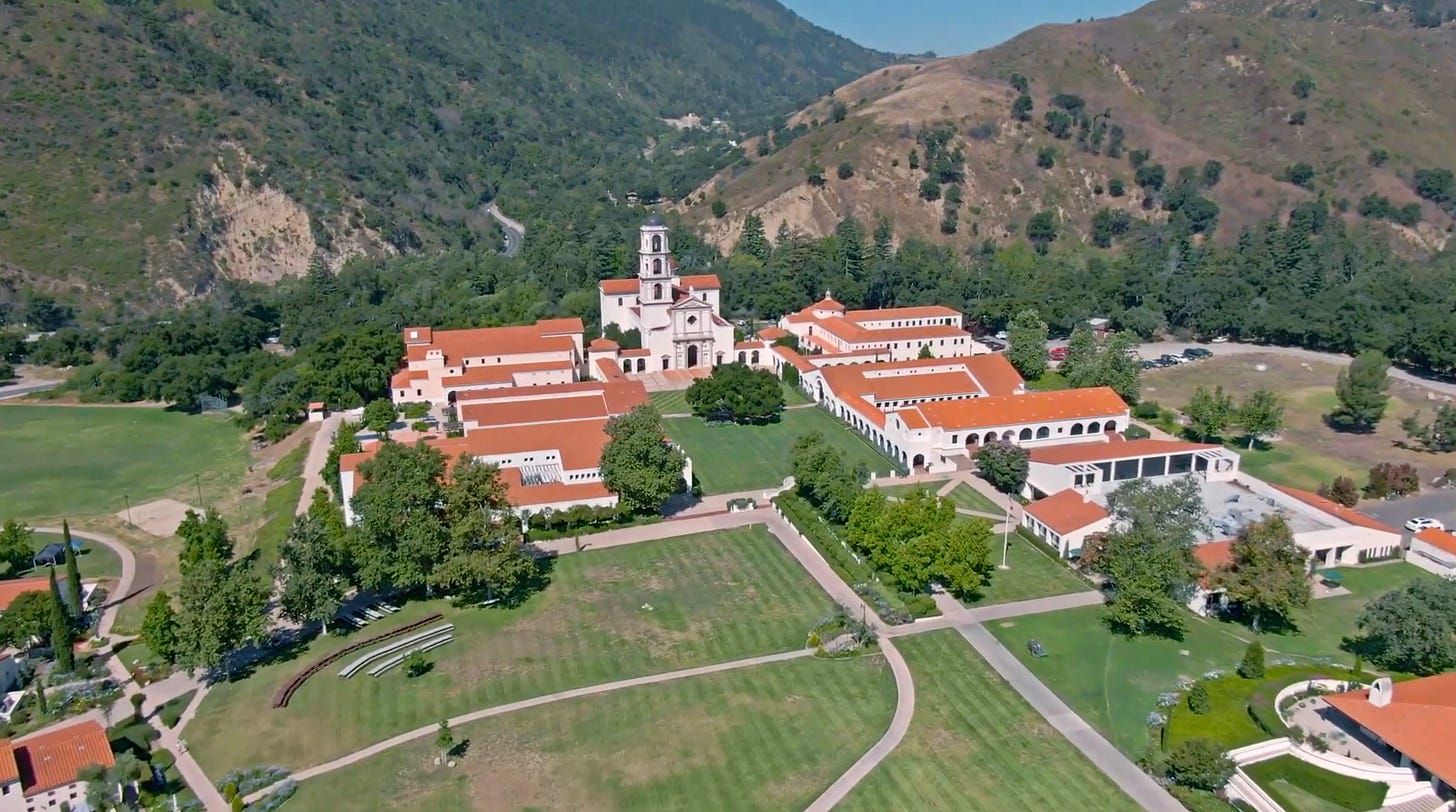Students Can't Hide Behind AI Here: This Institution Actually Embraces Deep Thought and Western Culture
A cure for the common college
He leads us into a room. We see a big window, a blackboard, and a round wooden table with chairs positioned around it.
“They can’t hide behind AI in here.”
Our campus guide grins at my remark. This approach to learning predates AI by more than 2,000 years, and yet it might be just the thing to fix what’s ailing today’s students.
These days many Gen Zers feel more comfortable chatting with AI bots than maintaining eye contact with human beings. AI showers them with affirmation, but human beings might challenge them.
What happened to all those late night college rap sessions older generations reminisce about?
What happened to cafeteria culture, to engaging in a friendly exchange of ideas over runny eggs and toast?
Today’s anxious college students often scurry back to their dorms to eat alone. There they do what they’ve been doing since junior high — they scroll through social media.
They distract themselves from real life.
On social media and elsewhere they quickly learn mental shortcuts that help them ape the habits of fully-formed people. They learn the “correct” opinions, the ones that will improve their social standing or at least spare them from public shaming.
From wailing protesters to soapboxing instructors, campus culture reinforces the groupthink. Recently, academics at Northwestern University discovered that 88 percent of students pretend to be more progressive than they really are. Often even their boyfriends, girlfriends, and best friends don’t know the real them.
Being honest is too risky.
And the modern university often allows students to avoid serious brain work. They can enroll in large classes and hide behind a lecture hall full of students whose bodies fill up chairs, but whose minds exist elsewhere. They’re tweaking their LinkedIn profiles, shopping online, or scrolling through social media. Students say such scenes are commonplace, even at Harvard.
And there’s no need to fear a pointed question from the professor. He’s probably just ambling through the same lecture he’s delivered since the Clinton administration. As long as enough warm bodies show up, the education theater can continue. But even students at our most prestigious university routinely skip class.
And when it’s time to demonstrate knowledge, students may simply outsource the brainwork to AI. They turn in their work to TAs, who might tap AI to grade it.
But that won’t happen at the college we’re touring. Our guide confirms my hunch: students can’t hide behind AI here.
Thank you to our paid subscribers. We couldn’t do what we do without you!
Not Your Typical College
It’s only about 70 miles north of Los Angeles, but Thomas Aquinas College feels much farther. When it comes to the typical college experience, the small, Catholic school seems even farther away.
Here you will find no majors, no minors, no text books, and no lectures. All students take the same courses. They graduate with a BA in Liberal Arts, but don’t let that get you thinking about Williams, Swarthmore, or Bowdoin. At TAC, a BA is the equivalent of a double major in philosophy and theology with a minor in mathematics.
Instead of textbooks, students wrestle with great books by Western luminaries such as Aristotle, Shakespeare, Plato, Euclid, Einstein, St. Augustine, Descartes, Newton, and of course St. Thomas Aquinas.
Instead of lectures, TAC offers the Socratic Method. Classes are small — no more than 20 students. And professors are called tutors. Instead of droning on at passive students, they lead discussions in which undergrads must prove, over and over again, that they understand the assigned reading.
That’s why our guide grinned at my quip.
He explained why hiding behind AI would be impossible at TAC. Everything is out in the open. Students understand if they come to class unprepared, their tutors will know and their peers will know. Imagine that, peer pressure incentivizing deep thought rather than shallow posturing.
But what about essays and other work that students complete outside of class? I assume the same incentive structure makes shenanigans less common. Students know if they flounder in class and then turn in a suspiciously competent essay, they would probably have outed themselves as AI cheats.
The TAC environment also forces students to develop skills that remain underdeveloped among many Gen Zers. TAC students learn how to argue. That doesn’t mean screaming trendy platitudes during a protest. It means knowing how to distinguish between good arguments and sophistry.
They practice resisting their phones, maintaining eye contact, holding deep conversations, and encountering new ideas. They practice feeling embarrassed about not understanding something, and then realizing such bouts with discomfort will make them better thinkers and better people.
Related
The Other Side of the Ledger
As my wife, my son, and I drove away from the campus, I challenged myself to not let the college win me over so easily. What might be wrong with TAC?
Maybe it’s too small (only 556 students). No doubt plenty won’t like the Catholic atmosphere, but for my family that’s a plus.
What about open inquiry?
Most liberal arts colleges have created intellectual echo chambers — for instance, among faculty at Bowdoin, Democrats outnumber Republicans 54 to 1. TAC remains one of the few Republican-leaning campuses. Maybe the college merely trades one kind of monoculture for another.
On the other hand, I get the strong impression that TAC’s commitment to inquiry is sincere. The syllabus includes many dead white males who, thanks to their views on politics, religion, and sex, have escaped Eight Percenters’ “oppressor” designation. TAC students must read Hume, Rousseau, Freud, and Marx, among others. And when it comes to Marx, the college demands more than The Communist Manifesto. In addition to that slender screed, they must read Economic and Philosophic Manuscripts, German Ideology, and Capital.
How many Marxist grads from Bowdoin have read Marx so deeply?
The Princeton review gives TAC high marks on academics as well as categories such as “great financial aid,” “classroom experience,” “most beautiful campus,” and “happiest students.” But what about what’s on the mind of so many recent grads?
How well do TAC grads do in today’s job market?
TAC students don’t immerse themselves in software engineering or hot new skills like AI. Maybe that’s a problem. Or maybe not.
John Johnson, founder and CEO of a cloud solutions and AI services provider Patmos, explains why he seeks out TAC grads. Recent grads from other colleges may boast impressive technical skills, but too often they’re missing something deeper.
Says Johnson, “It’s impossible for a company to teach a new hire how to think.”
Turns out even AI companies don’t want employees who’ve spent years outsourcing their brainwork to AI.











Please can someone set up a college like this in the UK!? I'll come and work there!
If you like TAC, you might also like St. John’s College. TAC founders McArthur and Berquist modeled TAC after SJC, with a more Catholic foundation. SJC has offered a non-sectarian curriculum since the late 18th century, and has been the lineage holder of the Great Books program since 1937.
https://www.sjc.edu/